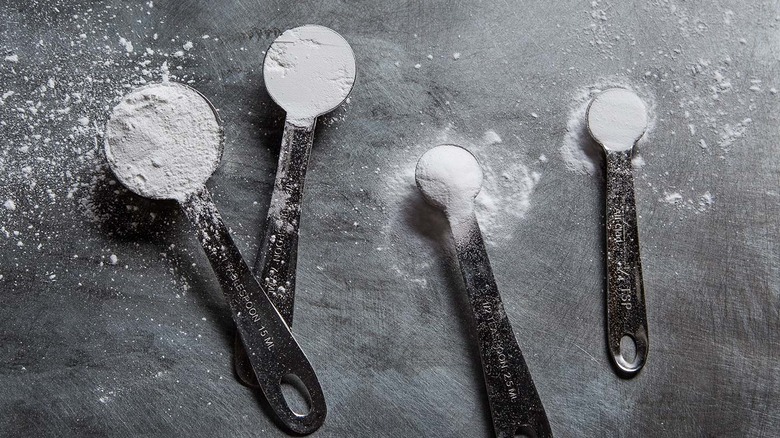Difference Between Baking Soda And Baking Powder
Here's the difference between baking soda and baking powder
Open your kitchen cabinet, and you'll likely see two familiar (and similar-sounding) ingredients: baking powder and baking soda. They're both leavening agents that give muffins and cakes the ability to rise through a magical carbon dioxide-producing reaction, but don't make the mistake of swapping one for the other. Though they're actually constituently alike as well (baking powder actually has baking soda in it), they have one main difference:
Baking soda needs an acidic ingredient in order to work.
① Use baking soda when: there's an acid in your recipe. This can be buttermilk, vinegar, yogurt or even cocoa powder, like you'd use for the perfect chocolate cake.
② Use baking powder when: the recipe doesn't call for an acidic ingredient, like in Tartine Bakery's salted chocolate-rye cookies.
③ Use both when: you have an acid but need a more powerful lift, or if you want to balance out the taste, like honing yogurt's tang in these buttermilk biscuits.
In the science world, baking soda is known as sodium bicarbonate, and it's a base—meaning it has a high pH. It needs something acidic (with a low pH) plus wet ingredients in order to work in your recipe. Baking powder has an acid in it already, so all you need to do is add moisture and you're set.
RELATED 5 Unexpected Uses for Baking Soda "
But since baking is all about balance, using one or the other can often be a case-by-case situation, depending on which other ingredients are present. The best way to stay safe? Double-check that word after baking on the ingredients box as you follow the recipe, and you'll be just fine.
